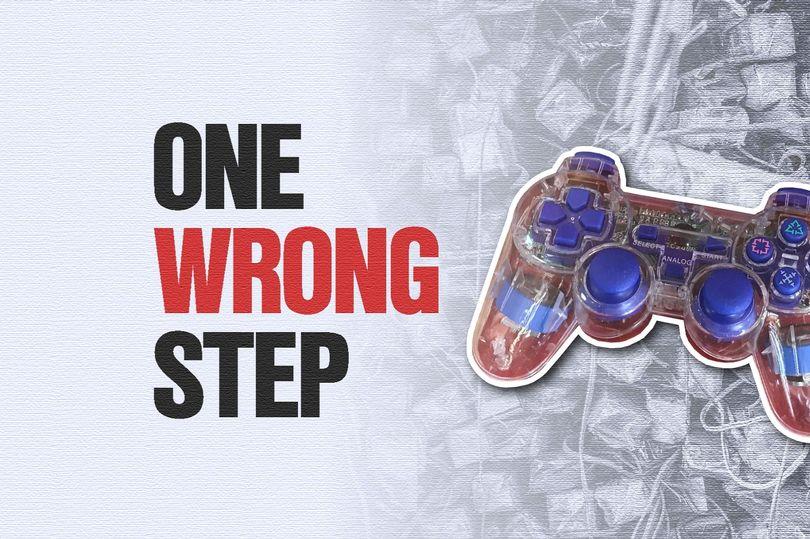
Evil ISIS turn games controllers and mobile phones into deadly bombs to target children
Evil ISIS rigged games controllers and mobile phones with lethal explosives in order to target children, it has been revealed.
TV remotes, taps, and clothes pegs are among the sickening booby-trapped household items uncovered by one charity in northern Iraq.
Placed in schools, hospitals, and civilian houses in villages occupied then deserted by ISIS, the homemade death traps designed to kill innocent people have now been exposed in a gallery of death by UK-based charity Mines Advisory Group (MAG).MAG finds and destroys landmines, cluster munitions and unexploded bombs which remain deadly long after conflicts have ended.
They have been working in Iraq since 1992 clearing mines from the Iran-Iraq war of the 1980s, the first and second Gulf Wars, and the persecution of the Kurdish people under Saddam Hussein’s government.But after large swathes of the country fell under the Islamic State group’s (ISIS) campaign of terror in 2014, they found themselves dealing with a new type of evil – ISIS’ improvised explosive devices (IEDs).
Without access to more traditional explosives, the jihadist group used the expertise of their members – many of them qualified professionals – to improvise their own brand of terror. What resulted were some of the most harrowing weapons the world has ever seen.
The Iraqi government declared their war with ISIS over. But hundreds of these evil IEDs remain.
It is these devices that Salaam Muhammed has become an expert in. He has been with MAG Iraq since the start, and since 2014 has disarmed over 2,300 IEDs left by ISIS.He has accumulated a grimly fascinating collection of these detonated devices, which he uses to help train the next generation of deminers and aid the global community’s understanding of the evolution of IEDs.
The most haunting are those made from basic household items, designed to trick unsuspecting civilians.
In a small glass case at MAG’s Chamchamal training base, such devices are displayed unceremoniously. On one end, a tap lies on its side, with a number of colourful wires protruding from its base. Next to it are clothes pegs hooked up to batteries, and even games controllers with no visible signs of tampering.
All are real objects Salaam has seen turned into deadly weapons.
“ISIS used different techniques to terrorise people,” he explained. “Some of their mines were laid in the ground, as defensive mines. But others were built into houses, mosques, schools, and so on.”
He explained how hundreds of civilians fled their villages to escape the ‘caliphate’ imposed by the group, only to find their homes transformed into death traps upon return.
“ISIS booby-trapped things like refrigerators and air conditioners,” he said. “In an area ISIS occupied for eight months we found 25 houses were booby trapped.”
The horror of these devices are brought to life by the charity in two ‘booby-trapped’ training houses.
Rigged with tripwires, buried landmines, and infrared detectors, every hidden explosive is something Salaam has seen in villages once occupied by the jihadists.
In a bedroom carefully designed to look torn apart by war, a wallet stuffed full of cash lies discarded on the floor. But like so much else in this house, it’s a trap, and touching it will cost a life.
In the kitchen, iron pots sit on the stove. But underneath lies a deadly tripswitch, triggering even more lethal explosives.
Detonating these devices is painstaking work. Salaam and his teams can work for months on a single house. They use detectors and specially trained dogs to root out even the trickiest devices.
Their work allows families to return to their homes and live without fear. When MAG teams return to villages they have made safe, Salaam says they are treated ‘like family’.
“They treat me so well sometimes I feel a bit embarrassed, to be honest with you,” he confessed. “They treat me with more than enough respect. It’s a lot. I have really good connections with many of the villagers.”
It is impossible to know how many deadly ISIS devices remain across Iraq. But the contamination is believed to be extensive.
Salaam says he still treats every evil device he comes across exactly the same way he treated his first landmine, way back in 1992.
“You have to give respect to the mines,” he says. “Because as soon as you become just a little bit complacent, you’re done.”
Source » manchestereveningnews.co.uk





